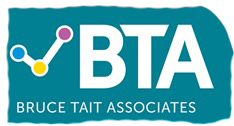28 March 2024 / Bruce Tait
Home
/ News & Views
/ Don’t use algorithms for applications!
At the last Scottish Fundraising Conference, I greatly enjoyed hosting a sold-out discussion with some of Scotland’s biggest Grantmakers. It struck me at the time that things had changed substantially over the course of my career. When I started as fundraiser many trusts and foundations were both secretive and adversarial. They didn’t want anything to do with fundraisers and they point blank refused to share information with us.
Fast forward 35 years, and we now have the likes of National Lottery, Wood Foundation and Corra Foundation speaking at fundraising conferences, sharing tips and hints. A genuinely open relationship has emerged between “poachers and gamekeepers”. Exceptions to this happy “concordat’ are rare, and a precious mutually supportive relationship now exists. This represents a paradigm shift in how charities and Grantmakers view their relationship with each other and with the broader community. Trust and transparency have emerged as foundational principles, guiding the relationship between those who give and those who seek funding. This evolution towards a more open dialogue has facilitated a more collaborative and less adversarial atmosphere, fostering a sense of partnership that benefits the wider community.
Fundraisers should not mess with this! Yet perhaps we are. With the lazy use of AI in funding applications.
It’s a great tool for the fast development of content, but I feel that the integration of AI into the grant writing process must be approached with care. On one hand, AI offers the promise of efficiency and accessibility, particularly for smaller charities that might lack the resources to hire professional bid writers. On the other, the impersonal nature of AI-generated applications could be seen as exacerbating the very issues that the sector has worked to overcome. Scottish Grantmakers are reaching out to professional fundraisers in a spirit of transparency and directness. It’s because they value us as professionals, as communicators, as advocates for the causes that we represent. The last thing that we should be doing is handing that relationship to a computer programme – however clever it is.
Yet that is what many people in the sector are advocating. I was on a charity knowledge platform this morning that offers an automated grant writing service for free. Just stick a few hundred words into a Bot and the little bunny will write your applications for you. And all those Grantmakers, that we have spent decades convincing to work with us, are about to be buried in an avalanche of awful, AI-written applications. Written in binary, with no heart, no context, no corroboration, and no accountability.
That is not good.
If the use of AI inserts a layer of detachment between charities and funders we are in trouble. I remember when many funders wanted nothing to do with fundraisers. We could easily be back there. Charities and AI service providers alike should be mindful of the sector's ethos and strive to use technology in a way that enhances, rather than detracts from, the principles of trust and transparency that are central to Scottish philanthropy. Our expert trust fundraising team at BTA only ever use AI for research – every word of our applications is written by a real, live expert.
This doesn't mean that AI has no place in the future of grant writing. AI can be a powerful tool for helping charities articulate their missions and needs, or for identifying themes and opportunities. But it should be used in a way that supports direct engagement with Grantmakers and upholds the values of the evolving philanthropic landscape. It needs a fundraiser to wield it as a tool – not a bot to automate it as a blunt instrument. It is essential to remain focused on the ultimate goal: fostering meaningful connections between charities and funders that lead to impactful outcomes for the communities they serve. By aligning the use of technology with the principles of trust and transparency, we can ensure that AI serves as a bridge, not a barrier, in the pursuit of this goal.


